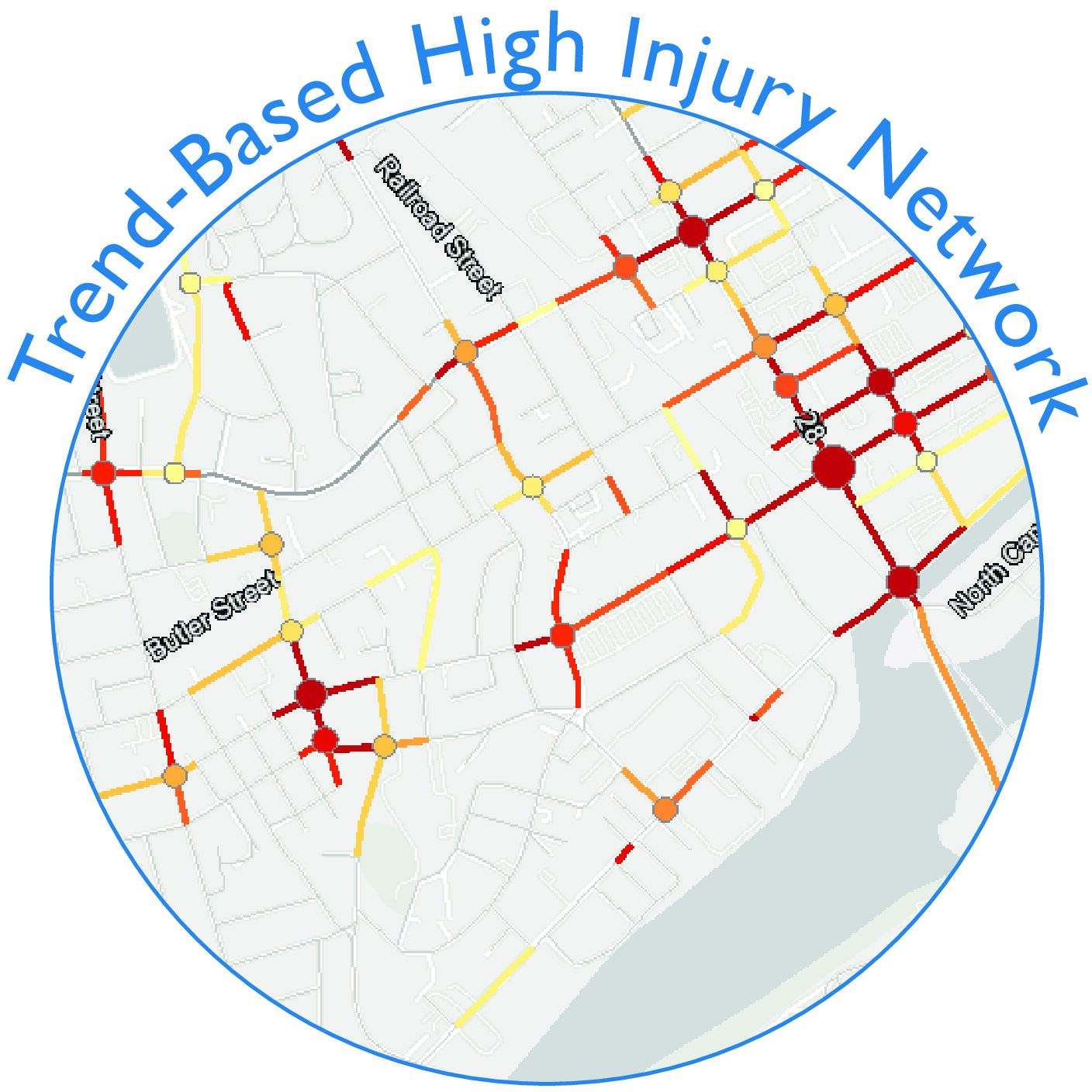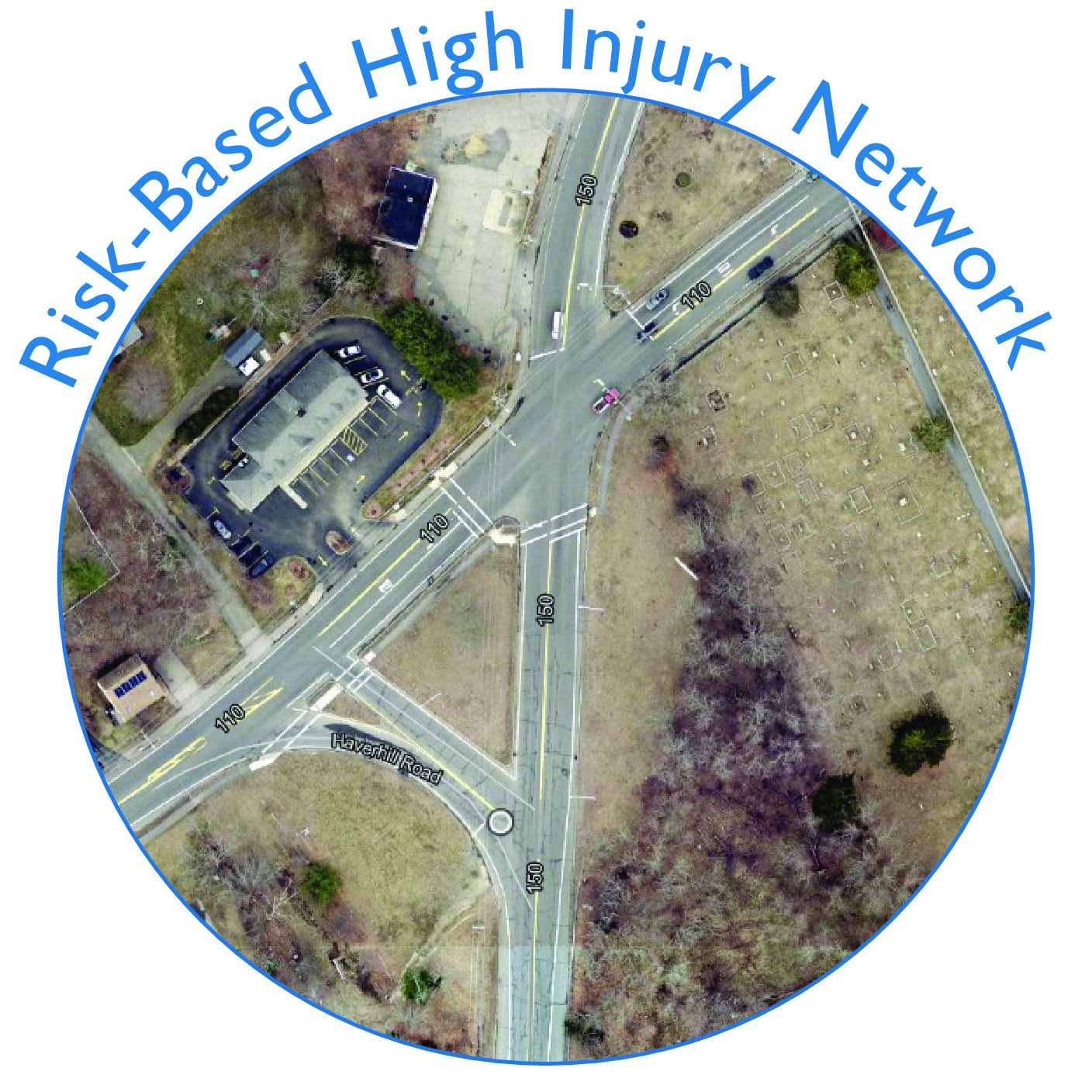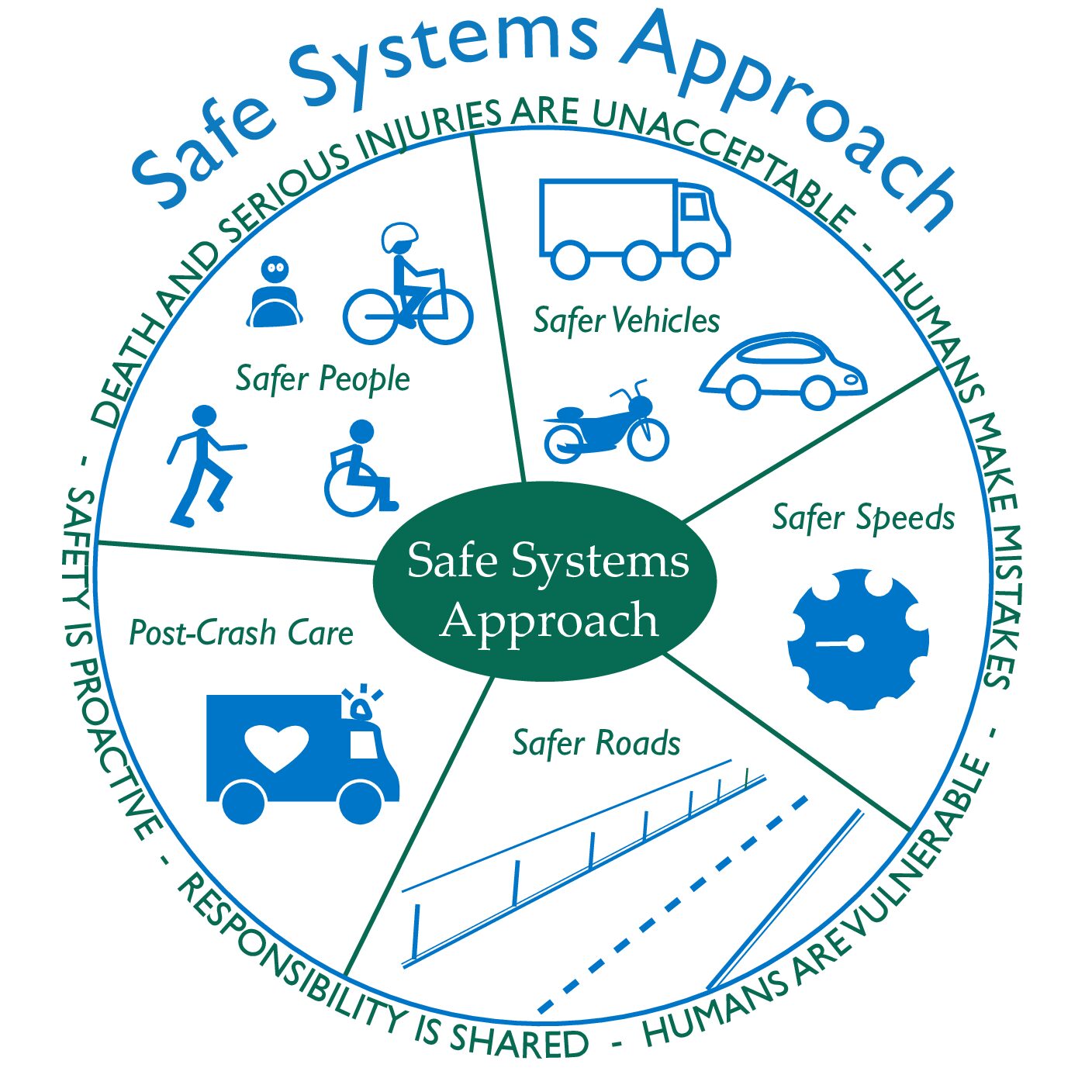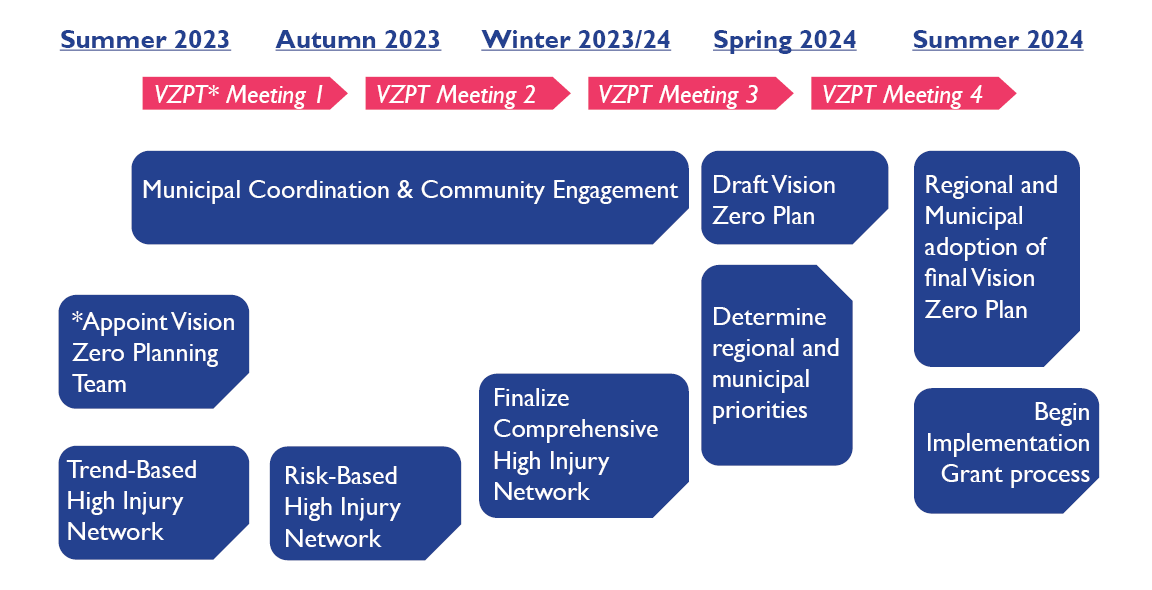Vision Zeo Plan & Timeline
Merrimack Valley Vision Zero
The regional safety action plan, which we are calling a Vision Zero Plan is designed in collaboration with the 15 cities and towns that make up the Merrimack Valley. We can use this plan to guide the region to a safer, more equitable place to enjoy all modes of transportation. Additionally, the inclusion of projects in this plan renders our communities eligible for Safe Streets and Roads for All Implementation Funding.
Our Vision Zero Plan is guided by the following questions:

Where have fatal and injury crashes occured?
By mapping crash data we can understand trends for fatal and severe crashes across the region. In addition to plotting crashes on a map, we also weighted each instance to emphasize critical areas to focus our countermeasures. For example, a fatal injury would be weighted higher than a severe injury. Meanwhile, a crash that only had property damage wouldn’t show up at all. We also weighted crashes that occured in equity emphasis areas more heavily. To view the map click here

Where are fatal and injury crashes likely to occur?
We use a predictive analysis to determine which roads and intersections are the most likely to have a fatal or injury crash occur. Variables like road width, volume of cars per day and speed are top contributors to the likelyhood of a crash amongst others. The image shows an intersection in Amesbury that did not appear on the Trend-Based High Injury Network, but was rated very highly on the Risk-Based High Injury Network. Our map of riskiest roads will be released soon.

How can we eliminate future fatal and injury crashes?
A redundant system is a safe system. This means that if one part of the system fails, other measures are in place to prevent crashes and mitigate the severity of injuries. This is where community input is essential for us to create the most context-sensitive safety countermeasures possible. If you would like to get involved, please visit our engagement page here.
Summer 2023
- Meet with Municipal Liaisons.
- Create Trend-Based High Injury Network (TB-HIN)
Autumn 2023
- Engage Communities by tabling at local events, setting up engagement kiosks.
- Coordinate scheduling and communication between MVPC and municipal liaisons.
- Create a Risk-Based High Injury Network
Winter 2023-2024
- Continue to promote Vision Zero and Safe Systems, gather feedback about the High Injury Network.
- Finalize HIN by combining RB and TB data analysis.
- Hold office hours with municipal staff & officials in each community.
Spring 2024
- Determine prioritization scheme for local and regional scales.
- Draft Vision Zero Plan with VZPT by synthesizing public engagement with HIN.
Summer 2024
- Finalize Vision Zero Plan and release for municipal and regional adoption.
- Support regional and municipal FFY24 SS4A Implementation Grant applications.


